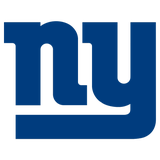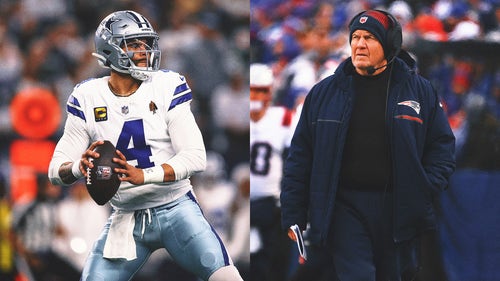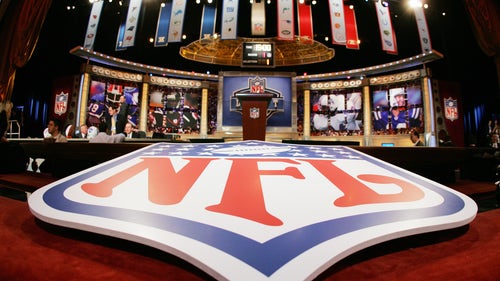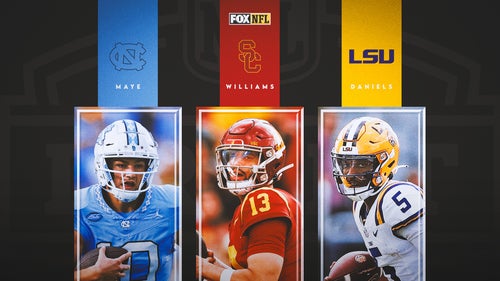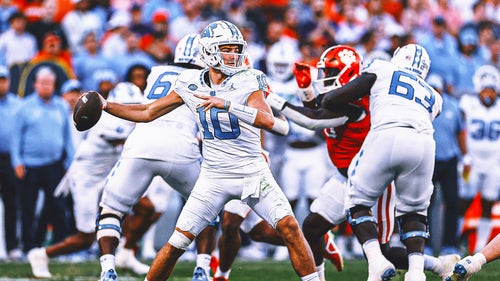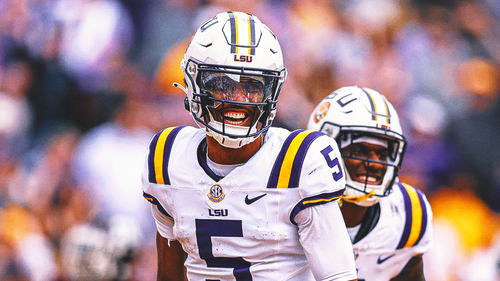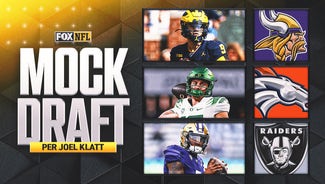
Meet The Protector
EAST HANOVER, New Jersey — Teddy Monica pulled his cab over on the side of Main Street. The small town’s main drag was dead at this hour, and so was business for a taxi driver. He sat in silence as the clock on the car radio turned over to 3:00 a.m., crawling toward the end of his 12-hour shift. Three more hours.
He pulled out a notebook and began to sketch, a way to kill time but also to escape reality and remind himself that his life was once something more. Under the glow of a street lamp, Monica drew intersecting triangles and arches, an intricate design for shoulder pads. Maybe this model would sell, he thought. Then his cell phone rang, a fare. He put the daydream on pause, hung up and drove off to his next customer.
* * *
It wasn’t always just a daydream. Just a few months earlier, Monica had been the go-to guy in the shoulder pads industry, a guru inside NFL and college football circles since the 1980s. Nearly every equipment manager in the league had Monica on speed dial. When franchise quarterbacks got injured and needed to stay on the field, from Roethlisberger to McNabb to Eli Manning, Teddy got the call.
And yet there he was, alone in the driver’s seat of a taxi, sketching designs in the dead of the night. Monica’s company, Impact Protective Equipment, had gone out of business. Though he was well respected, with 14 years at Riddell under his belt, “Nobody wanted to hire a 57-year-old guy,” he says. “They could get two guys for what they would have to pay me.”
After being out of the game for three years, Teddy got his second chance. He found a new partner with a better business sense to harness Monica’s design ability. Monica has invented a new set of shoulder pads that he estimates more than 300 players in the league now wear—and they’re not just for NFL players, Monica has sold the pads to Ohio State, Michigan, UCLA, and about 115 other Division-I college programs. XTECH pads are made in a small warehouse in New Jersey and fashioned out of military-grade, water-resistant foam, which makes them lighter than standard shoulder pads when soaked with sweat. Von Miller wears them. Khalil Mack wears them. Fifty-one New York Giants wear them. Why? “I can hit someone running full speed and not feel a thing now,” says Falcons wide receiver Mohamed Sanu.
In an industry of equipment and apparel goliaths, a little workshop in New Jersey has elbowed its way into the market of the biggest sport in America.
* * *

Monica doesn’t have a formal engineering or design degree, but the 61-year-old has always been interested in the self-taught science of How Stuff Works. When he was a kid, his father coached high school football in Madison, New Jersey. During summer break, a 10-year-old Teddy tagged along with his father. “He would leave me in the equipment room and I would tear stuff apart and get in trouble for it,” Monica says. Teddy disassembled shoulder pads and helmets and then raced to put them back together before his dad caught him. “I just was always interested in design.”
Another time, Monica toured Fenway Park with a friend who worked in equipment there. One of Fenway’s facilities managers joined them and pointed out notable features, including the retired numbers in right field. “They were horrible looking, plywood and peeling,” Monica says. Mr. Fix It couldn’t help but comment, Hey, those numbers look like s---. The facilities manager shot back with, Yeah, you think you could do better?
Monica knew he could, so he ordered plastic as soon as he got home. He cut out Carl Yastrzemski’s No. 8 and shipped it up to Boston. The facilities team loved it and Monica did the rest of the retired numbers, which hung at Fenway for seven seasons, including two World Series runs.
Before he was a designer he was a linebacker. Monica played college football at Gardner-Webb University in North Carolina, where he constantly tinkered with gear during downtime. His teammates took note. “I always tried to make the equipment that I wore work optimally,” he says. “If a guy got injured and needed an extra pad, we would rob the trainer’s foam stash and tape it to the shoulder pad, because that is all we had available back then.”
After college, Monica continued to customize shoulder pads to protect players with specific injuries, first as an assistant equipment manager for the Giants, then the USFL’s Jacksonville Bulls and then as a lead shoulder pad designer for Riddell. “They called him the Steve Jobs of shoulder pads,” says Bob Broderick, Monica’s current business partner at XTECH.
Monica’s legend grew with each successful house call. In 2005, Eagles quarterback Donovan McNabb bruised his sternum early in the season. Monica visited the facility, measured McNabb and crafted a special pad to absorb the impact. McNabb played through the injury until a sports hernia sidelined him in Week 10.
One year during training camp, Roethlisberger needed help with a cracked rib, a common ailment during the Steelers quarterback’s reckless, early playing days. So Monica drove the 270 miles from his home in East Stroudsburg, Pa. to St. Vincent College in Latrobe, Pa. and went to work. “We made the inside of the rib pad Velcro compatible and right where the rib was we made a little piece with a hole in it, so when you put it right over the injury, all the impact would go around the injury,” he says, drawing a small circle with his hands. “And we never got anything returned, every [design] works.”
“He’s like the insurance company tagline, We know a thing or two, because we’ve seen a thing or two,” says Milton Neal, director of equipment operations at Washington State. “He is good to have on your speed dial, because he’s seen it, and he’s usually fixed it.”

In 2003, Monica left Riddell to form his own company, Impact. He designed a smaller, lighter shoulder pad that quickly gained popularity throughout the league. Among his first wave of NFL clients was Eli Manning. He has worn Monica’s designs for every one of his 211 consecutive starts. Says Monica, “He hasn’t missed a game, whereas I wish Tony Romo would give us the time of day.”
Some shoulder injuries are impossible to prevent with shoulder pads, like shoulder subluxation, but Monica believes his innovative designs can eliminate many common AC joint problems, collarbone and rib injuries. He hasn’t been able to watch a football game normally for the last 30 years because the mad scientist in him automatically analyzes every injury. “If I could see how the guy was injured, a light might go on like, Hey, if I did this to the shoulder pad, maybe it could help lessen that injury,” he says.
Take this year’s NFC title game for example. Monica was frustrated by Green Bay’s injury report. Five players listed, three out with shoulder injuries, and one questionable with a rib (not including Jordy Nelson or Clay Matthews, each of whom missed games earlier in the season with fractured ribs and a shoulder injury, respectively). The Packers do not wear Monica’s pads. “A lot of guys are of the mindset, if ain’t broke don’t fix it,” Monica says. “But, it’s broke.”
* * *
Impact went out of business after seven years because Monica and his small team lacked the marketing and business acumen to ensure longterm survival. They relied on word of mouth for advertising, and rented out a facility that was too big for their budget. The designs were still popular among players, but Monica needed to find a business partner who could take care of everything but the inventing.
In 2012, two years into Monica’s cab driving stint, Giants equipment managers Ronnie Barnes and Joe Skiba set him up with Broderick, a former Giants ball boy who owns his own sports marketing agency. A few months after their first meeting in the Giants equipment room, XTECH Protective Equipment was born.

Monica knew from the start that he wanted to use a different type of foam than the black, open-celled polyurethane that is standard among competitor models. He put Broderick in charge of finding foam options. Half-joking, Broderick googled, “world’s best foam.” The first result that popped up was the website for XRD, a manufacturer of military-grade foam that advertised incredible shock absorption. After testing out the product, XTECH signed an exclusive agreement with XRD, so that no other company can use the foam in football shoulder pads. Broderick hooks prospective clients with a dramatic sales routine that demonstrates the protective qualities of the XRD foam. He sandwiches one of his hands with two pieces of the neon yellow foam. In his other hand, he lifts a helmet high over his head and then slams it down hard onto his foam-covered hand. He takes his “smashed” hand out, wiggles his fingers and smiles.
Helmet slam theatre worked, and teams bought in. Today, players on 27 NFL teams and over 200 college programs (Divisions I through III) wear XTECH pads. Positive feedback on the pads spread quickly among the small community of football equipment staff. “We had a couple players that damn near came and hugged me and my assistant,” Neal says. “Typically, the first words out of their mouth was, ‘I know I am getting hit, but I can’t feel it.’”
Sanu had shoulder surgery in college, and has a history of AC joint separations. “I hurt my shoulder a few times just from hitting somebody, and I have yet to do that in these pads,” he says.
The biggest hurdle in selling players on the pads is just getting them to realize they actually have a choice. Giants defensive end Damon Harrison never thought about what company made his shoulder pads until, while with the Jets, he saw teammate Muhammad Wilkerson wearing XTECH. “It’s just something that is so generic,” Harrison says. “From the moment you started playing, your shoulder pads were always given to you. Everybody had the same kind.”
The NFL has established standards for most equipment. There are detailed ratings programs for helmets and cleats, used as guidelines to inform players on the best equipment to wear. An entire subcommittee is devoted to evaluating helmet performance and another for studying cleats. Surprisingly, there isn’t a league standard or rating system for shoulder pads, though league spokesman Brian McCarthy says this is an area that the Health and Safety committee is looking into. “There is not one rule regarding shoulder pads,” Monica says. “It’s ridiculous. I mean, they have parameters on thigh pads, and shoulder pads are a little bit more important than that.”
* * *
Monica’s cell phone rang. It was the lead up to the 2015 season, and his old pal, Giants equipment manager Joe Skiba, was calling. Defensive end Jason Pierre-Paul was back at the Giants facility after his gruesome fireworks accident. His mangled hand was tender and required extra padding in his glove to protect the wound. In all his years in football, Monica had never seen an injury like this. Could you stop by with your foam and see what you can do?. Teddy hung up and drove off to his next customer.
Question or comment? Email us at talkback@themmqb.com.
